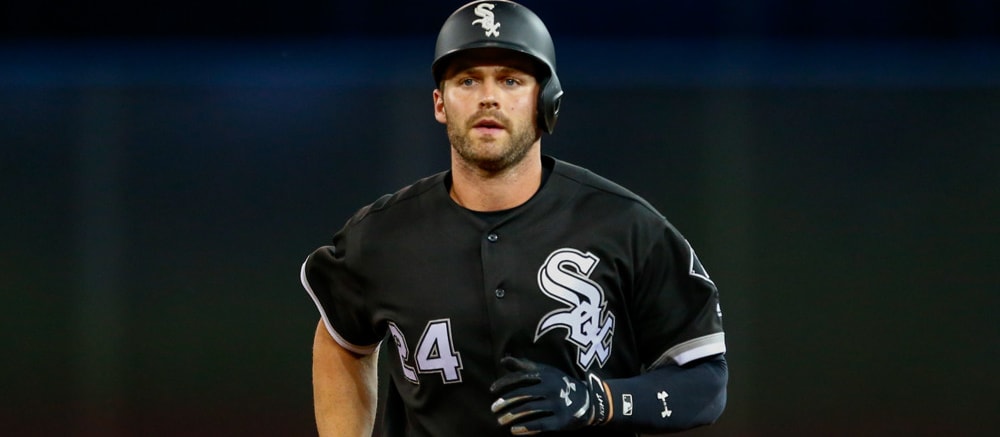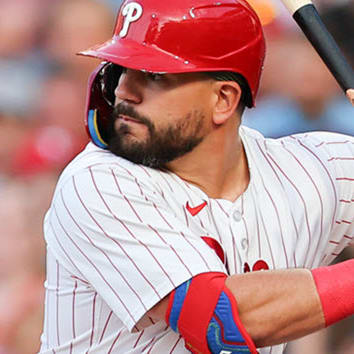This article is part of our The Z Files series.
Who's hot, who's not, who cares.
This isn't the first time those words have appeared on this site. The late Steve Moyer wrote a piece by that name in his Outsiders column in the early days of RotoWire. Among the many reasons I miss Steve, I would have loved to ask him if he still feels that way. Knowing Steve, this would have led to an argument settled over a cold beverage the next time we were able to meet up.
I used to completely agree with that sentiment, and to a certain extent, I still do. Research teaches us hot and cold streaks are largely happenstance. When it comes to setting a DFS lineup, I don't pay attention to streaks. A good matchup is a good matchup; a bad matchup is a bad matchup. However, in today's fantasy landscape, it's prudent to care about who's hot and who's not.
The game has changed since Steve wrote that catchy phase. Back then, American or National League-only formats dominated. Reserve lists were restricted to injured players or those in the minors. The ability to pick up a player often required a natural roster opening.
A decade ago, mixed leagues with reserve lists began to really permeate the fantasy fabric. Today, mixed 10 and 12-team leagues dominate the population. Further, not only is there free movement between active and reserve, a preponderance of leagues deploy daily moves. You snooze, you lose.
On Wednesday's RotoWire Podcast, Derek Van Riper and I discussed
Who's hot, who's not, who cares.
This isn't the first time those words have appeared on this site. The late Steve Moyer wrote a piece by that name in his Outsiders column in the early days of RotoWire. Among the many reasons I miss Steve, I would have loved to ask him if he still feels that way. Knowing Steve, this would have led to an argument settled over a cold beverage the next time we were able to meet up.
I used to completely agree with that sentiment, and to a certain extent, I still do. Research teaches us hot and cold streaks are largely happenstance. When it comes to setting a DFS lineup, I don't pay attention to streaks. A good matchup is a good matchup; a bad matchup is a bad matchup. However, in today's fantasy landscape, it's prudent to care about who's hot and who's not.
The game has changed since Steve wrote that catchy phase. Back then, American or National League-only formats dominated. Reserve lists were restricted to injured players or those in the minors. The ability to pick up a player often required a natural roster opening.
A decade ago, mixed leagues with reserve lists began to really permeate the fantasy fabric. Today, mixed 10 and 12-team leagues dominate the population. Further, not only is there free movement between active and reserve, a preponderance of leagues deploy daily moves. You snooze, you lose.
On Wednesday's RotoWire Podcast, Derek Van Riper and I discussed this very topic. We talked about the hot starts of Matt Davidson and Christian Villanueva. I expressed my preference for Davidson, opining his hot start wouldn't last, but it lengthened his leash for a team auditioning players for when they're good again, which could be sooner than later. DVR took the opposite approach, contending Villanueva was the call, especially in shallower leagues. The hypothesis being we know what Davidson is, and all my method does is buy a few more weeks of mediocrity, while we don't know what we have with Villanueva. Sure, he wasn't an elite prospect, and 26 years of age is older than most rookies, but as Lloyd Christmas might say, at least there's a chance. Not to mention, especially early on, there's always a Nick Markakis type available in 12-team leagues if the move doesn't work out. In this case, the parachute could even be Chase Headley, the player in line to lose playing time if Villanueva gains traction. It goes against my analytical nature but makes sense from a practical point of view. When the downside is minimal, reward outweighs risk.
Another area deserving attention in the early going is tracking playing time and role scenarios, especially in terms of closers. What managers say and what they do don't always jibe.
For example, originally, the New York Mets said they'd be playing matchups more with their bullpen. Later, they refined that by saying Jeurys Familia would get most, but not all the saves. So far, it's been all, but "so far" has been less than a week. I sense it will be pretty close to all, so if someone drafted Familia at a discount and has other closers, I'm making an offer.
A similar scenario is happening with the White Sox duo of Joakim Soria and Nate Jones, supposedly in a timeshare. The first two chances went to the veteran Soria, with the oft-injured Jones setting him up. This doesn't mean Jones won't see ninth-inning duties, but it's rare for teams to stick with a committee plan to end games.
Another interesting development for deeper leagues is the Red Sox plan to limit Craig Kimbrel's workload, only using him for one inning, at least early on. This may have cost them on Opening Day but has worked fine since. The important observation is Joe Kelly appears to be the eighth-inning guy. My research demonstrates saves correlate to team wins and ERA. The Red Sox have a solid staff, so on paper they profile to amass a bunch of saves, with Kelly the most likely beneficiary if Kimbrel needs a day off. Kelly already has one save and could be called on a half dozen more times, assuming he stays healthy and keeps the walks under control. In deeper leagues where high-strikeout relievers are more useful, Kelly could be available. The half-dozen saves could come in handy.
If you're wondering about my take on the Angels, picture me shrugging my shoulders with a goofy look on my face. We're going to need more games to get a line on Mike Scioscia's plans.
This is as much a DFS concern as it is in season-long leagues, but something else I like to do while there's still snow on the ground is track whether left-handed platoon batters are always lifted when a southpaw reliever is brought into the game. Three of the more intriguing examples are Derek Fisher, Colby Rasmus and Curtis Granderson. Apologies to NL-only players, this isn't an AL bias thing, it's simply these hitters fit the profile I look for. Rasmus and Granderson are with new teams, neither of which play defense well enough to keep them in the lineup in a close game. Fisher plays on a club with a bunch of options.
Through Wednesday night, Granderson started six of the seven Blue Jays games. Steve Pearce pinch-hit for him in half of those starts. Pearce started the seventh game, with Granderson pinch-hitting. It appears Toronto is utilizing a strict platoon in left field and won't hesitate to make the switch during the game. This tempers Granderson playing time a tad, though hitting in a meaty spot in the order helps his cause.
Putting Colby Rasmus' early struggles aside, he's only been pinch-hit for once in four starts while he pinch-hit for Craig Gentry in the season opener. Here, the jury is still out. Even in seven games, it's apparent Toronto will lift Granderson. We haven't seen ample games to discern if Baltimore will leave Rasmus in. They haven't been involved in may close contests. That said, simply because Gentry is a better fielder, I expect Rasmus to be taken out of close games down the stretch.
Derek Fisher is the chief beneficiary of Yulieski Gurriel's absence, as the first baseman curiously served his suspension before being placed on the disabled list. Jake Marisnick is likely to start versus southpaws with Fisher playing against right-handers. Fisher has been removed twice in five starts, which makes sense since either Marisnick or Marwin Gonzalez can shag flies in left field.
The scenario with Fisher is not surprising. However, there was a time both Granderson and Rasmus would play all nine, regardless of the situation. As mentioned, especially in DFS, they're all less attractive options.
There's nothing special about this trio, other than I gravitated towards them with late or reserve picks. That is, don't focus on who I used for examples, but rather the concept and process. Look at your rosters and identify the fringe players showing up a few times. Depending on their plights, they could be candidates for an upgrade.
The final big-picture area I like to follow is team stolen base tendencies, both from an offensive and defensive perspective. To be honest, a week's worth of games is far too small to draw actionable conclusions; however, there is one intriguing observation. Last season, Toronto stole the second fewest bases in the majors. In one week, they've swiped five, albeit with three courtesy of Kevin Pillar. The other two belong to Josh Donaldson and, wait for it, Luke Maile. Perhaps the Jays are loosening the reins, so if Devon Travis could ever get on base, maybe he'll be given the green light.










